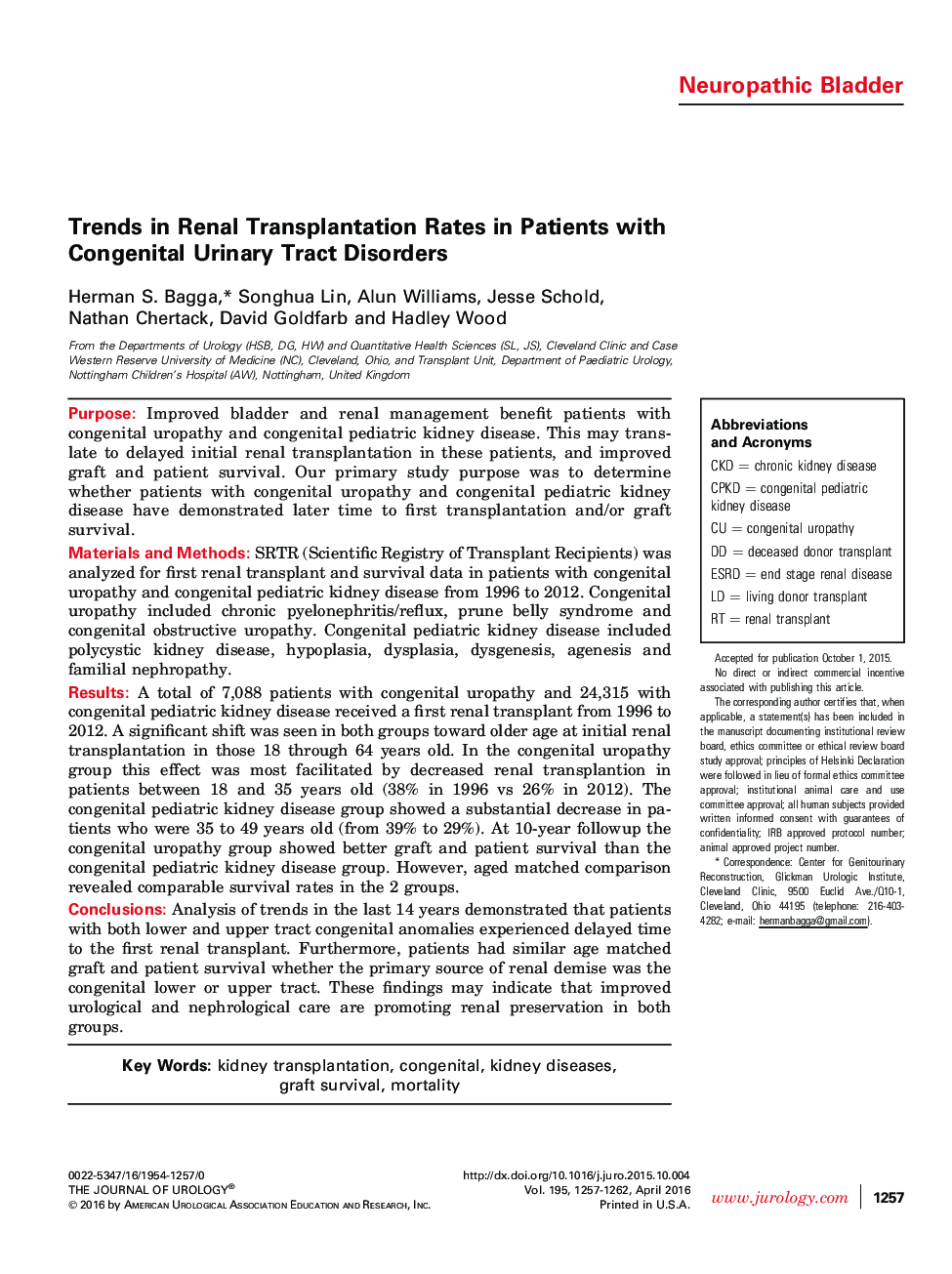| کد مقاله | کد نشریه | سال انتشار | مقاله انگلیسی | نسخه تمام متن |
|---|---|---|---|---|
| 3857951 | 1598877 | 2016 | 6 صفحه PDF | دانلود رایگان |
PurposeImproved bladder and renal management benefit patients with congenital uropathy and congenital pediatric kidney disease. This may translate to delayed initial renal transplantation in these patients, and improved graft and patient survival. Our primary study purpose was to determine whether patients with congenital uropathy and congenital pediatric kidney disease have demonstrated later time to first transplantation and/or graft survival.Materials and MethodsSRTR (Scientific Registry of Transplant Recipients) was analyzed for first renal transplant and survival data in patients with congenital uropathy and congenital pediatric kidney disease from 1996 to 2012. Congenital uropathy included chronic pyelonephritis/reflux, prune belly syndrome and congenital obstructive uropathy. Congenital pediatric kidney disease included polycystic kidney disease, hypoplasia, dysplasia, dysgenesis, agenesis and familial nephropathy.ResultsA total of 7,088 patients with congenital uropathy and 24,315 with congenital pediatric kidney disease received a first renal transplant from 1996 to 2012. A significant shift was seen in both groups toward older age at initial renal transplantation in those 18 through 64 years old. In the congenital uropathy group this effect was most facilitated by decreased renal transplantion in patients between 18 and 35 years old (38% in 1996 vs 26% in 2012). The congenital pediatric kidney disease group showed a substantial decrease in patients who were 35 to 49 years old (from 39% to 29%). At 10-year followup the congenital uropathy group showed better graft and patient survival than the congenital pediatric kidney disease group. However, aged matched comparison revealed comparable survival rates in the 2 groups.ConclusionsAnalysis of trends in the last 14 years demonstrated that patients with both lower and upper tract congenital anomalies experienced delayed time to the first renal transplant. Furthermore, patients had similar age matched graft and patient survival whether the primary source of renal demise was the congenital lower or upper tract. These findings may indicate that improved urological and nephrological care are promoting renal preservation in both groups.
Journal: The Journal of Urology - Volume 195, Issue 4, Part 2, April 2016, Pages 1257–1262
